Android Media Player for Digital Signage
Digital Signage requires media players that offer high reliability, multiple interfaces, performance graphics in a compact form factors to suit different applications. Media Players can be used in DOOH, standalone kiosks, menu boards, video wall and LED based digital signage applications. Media Players are available with the latest CPUS for various levels of processing and IO. Tekdis have one of the biggest range of Media Players specifically for Digital Signage. Our options include the models from Axiomtek, Giada Tech and Nexcom. Contact our team today to find out the best solution and pricing.
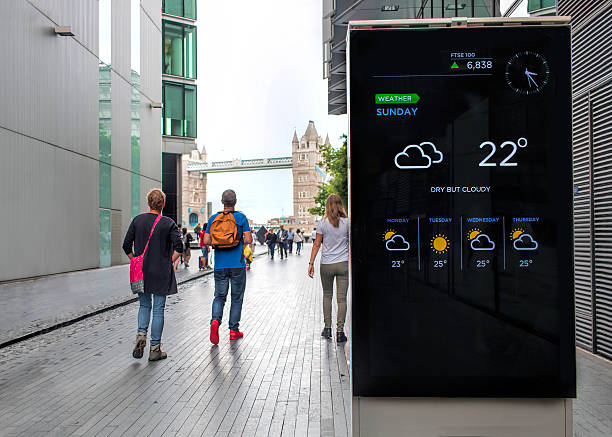
-
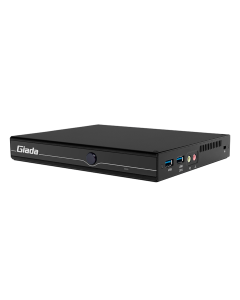 D77 Android 12 Media Player RK3588
D77 Android 12 Media Player RK3588High-performance ARM signage player with 4 Video Output with EDID
Key Features:
- Rockchip RK3588 processor
- 3 x HDMI (4096 x 2160 @60 Hz)
- 1 x HDMI (1920 x 1080 @60 Hz)
- Support hardware EDID
- Support Wi-Fi/BT module
- Support 3G/4G module
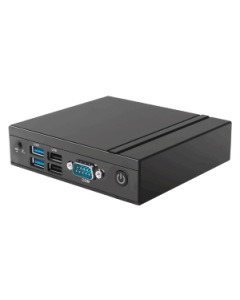 DN76 Android Dual-HDMI Arm Player
DN76 Android Dual-HDMI Arm PlayerRockchip RK3568 Dual HDMI Support UHD (4K) Video Playback 2GB DDR4 32GB eMMC
Key Features:
- 4K Display - Mali-G52 GPU, DN76 can support a 4K video and a 1080P video playback simultaneously
- Energy Saving Design - adopts RK3568, a low-power quad-core processor with TDP 6W
- Onboard Wi-Fi/BT module
- Fanless design
- 1 x HDMI (4096 x 2160 @60 Hz)
- 1 x HDMI (2560 x 1440 @30 Hz)
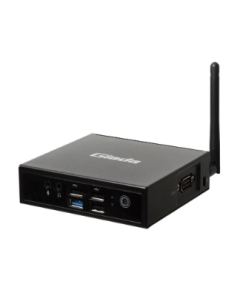
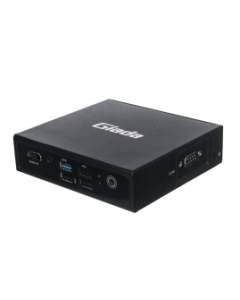 DN75 - RK3399 Dual core Cortex A72 & Quad-core Cortex-A53
DN75 - RK3399 Dual core Cortex A72 & Quad-core Cortex-A53RK3399 Dual core Cortex A72 and Quad-core Cortex-A53 media player

 DN74 - RK3399 Quad core ARM player
DN74 - RK3399 Quad core ARM playerDN74, RK3399 Dual-core ARM Cortex-A72 and Quad-core ARM Cortex-A53
Android Media Players
Media players are devices designed to play and display multimedia content such as images, videos, and audio files. In the digital signage industry, media players serve as the core component of digital signage systems. With an extensive variety of models and brands to choose from (such as the Android media player, which can run directly off the user-friendly Android operating system), these cutting-edge devices can offer a wide range of multimedia capabilities as they seamlessly connect to digital displays, allowing businesses to showcase dynamic and engaging content to targeted audiences.
By using media players, advertisers and businesses can remotely showcase engaging content, including videos, images, and interactive applications. You can manage and schedule content, update promotions in real time, and deliver personalised messages to their customers. With their versatility and ease of use, media players have become integral tools for creating captivating and interactive digital signage experiences in various industries.
Types of Media Players
Media players come in all kinds of shapes and sizes, but can generally be categorised into three categories;
Mini Media Players are compact and portable devices designed for space-constrained environments. As the name suggests, they are smaller in size and typically lightweight, making them easy to install behind or alongside digital displays. Mini-media players are commonly used in small-scale digital signage setups, such as retail kiosks, point-of-sale displays, and menu boards. They offer basic multimedia capabilities and are ideal for businesses seeking a cost-effective solution for displaying simple content like images and videos in limited spaces.
Multimedia Players are a bit more advanced, and can usually support multiple input and output options, providing greater flexibility in content playback. They can handle various media formats and resolutions, enabling the display of higher-quality videos and images on multiple screens simultaneously. Multi-media players are used in larger digital signage installations, such as shopping centres and airports. They are perfect for delivering dynamic content across multiple displays, creating eye-catching video walls, and engaging audiences with interactive applications.
Ultra-Thin Media Players are ultra-thin media players. Slim and sleek, these players will often pack high-performance processors and enhanced graphics capabilities, enabling smooth playback of 4K UHD and HDR content. Ultra-thin media players are commonly used in high-end digital signage applications, including luxury retail stores, museums, and high-impact advertising displays. Their slim profile allows for easy integration behind ultra-thin displays or mounting directly on the back of flat-panel screens, creating a clean and minimalist appearance.
Any media player you get will typically have its pros and cons, the specifics of which will ultimately depend on the specifics of the player. Broadly speaking, the cons of media players may include potential hardware limitations, occasional software compatibility issues, and dependency on power sources for continuous operation, while the pros usually include remote management and real-time updates for dynamic digital signage experiences, and of course, seamless playback of multimedia content.
How Does a Digital Signage Media Player Work?
In layman's terms, a digital signage media player is like a smart computer that makes digital signs spring to life with imagery, share important messages, and grab the attention of customers in fun and engaging ways. It achieves all this by connecting to a digital display, such as a TV or a monitor, and plays all the engaging imagery you see on the screen, such as pictures, videos, and ads. The media player is like the brain behind the digital sign, telling it what to show and when to show it. It can be controlled from far away using special software, allowing businesses to change the content on the sign easily, even without being physically there. This is why it's widely used in industries like retail stores, restaurants, airports, and many other places where businesses want to grab people's attention (digital signs are also a great way to grab people’s attention in crowded areas).
Selecting the Right Android Media Player
There are several factors you should keep in mind when selecting your Android media player.
Size: You’ll need to be conscious of the space you have in the areas where you intend to set up your digital media player, as this will inform the optimal size of the product. If you’ve got your eye on a larger model, be aware that additional structures or mounts are often required to install these players alongside the digital displays. If you don’t have much room, then obviously one of the smaller models is best for you.
Many Android media players are compact, measuring no longer than 20 cm and often resembling a USB stick or small device box. Due to their smaller size, most of these players are considered lower-end, with limited processing power and features, usually offering around 8GB of storage. Nevertheless, with advancements in technology, some small media players now boast higher processing power, making them capable of handling more complex digital signage solutions.
Software Compatibility: Different manufacturers offer digital signage and media players with varying specifications, which are compatible with distinct digital signage software. Both digital signage and media players are the hardware that requires operating systems and software to function. Digital signage software, also known as a content management system, plays a crucial role. It allows users to upload, store, schedule, edit, and monitor their digital content efficiently. Users need to be aware that some media players are specifically designed to work with only certain software or operating systems. Incompatibility between your media player and software could result in your digital signage not functioning properly.
While digital signage media players provide computing power to the display, they also rely on an internet connection to connect to the content management system. Without both the media player and digital signage software, the display would remain blank and unable to showcase any content.
Processing Power: The primary purpose of digital signage is to display digital content efficiently. To ensure smooth playback, the processing power of the digital signage media player is crucial. If you attempt to play video content with a higher resolution than the media player can handle, it may lead to extended load times, causing delays or blank screens. Thus, it's essential to determine the content's resolutions you plan to display before purchasing any digital signage and media player. This will help ensure seamless performance and optimal playback quality.
Why Choose Tekdis?
Tekdis stock a wide range of media players designed for digital signage. We also offer an extensive assortment of various other tech; from industrial computing and medical solutions to networking and cameras and storage and memory. To check out our full range of products, head over to the Tekdis website for a browse. If you require some personal assistance in finding a product that suits your specific needs, don’t be afraid to get in touch with our friendly staff directly via our contact page.
